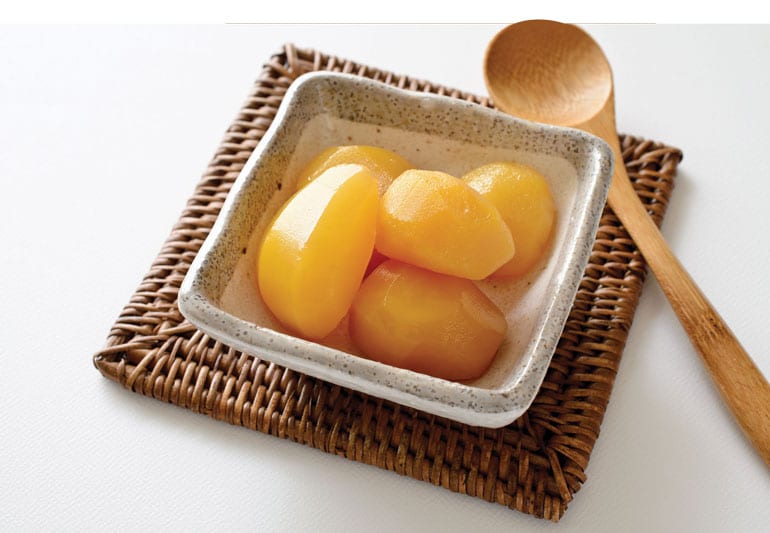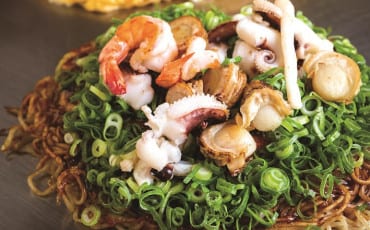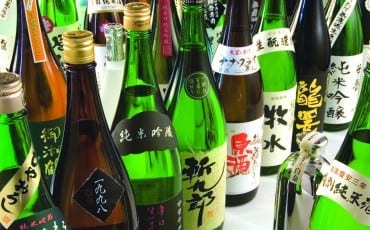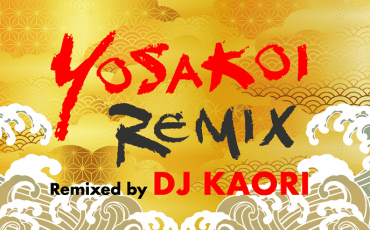- OISHII
- OISHII Wiki
- Dishes
- Kuri no kanroni
OISHII Wiki
Dishes
Kuri no kanroni

When autumn arrives, kuri (chestnuts) begin to ripen, ready to be picked. Kuri is a favourite flavour of the season, long cultivated in Japan as a staple food for centuries. Today, some Japanese still go hunting for chestnuts in the forest. Kuri are usually eaten roasted, steamed, baked or cooked with rice.
But the bounty of kuri in autumn can also be seen in a wide variety of Japanese sweets. One of the most popular is kuri no kanroni (candied chestnut compote), whole, peeled chestnuts that have been preserved and bottled in syrup. The mustard-yellow hue of these jewel-shaped chestnuts is all natural and traditionally comes from simmering the chestnuts using dried gardenia pods. The syrup itself is light and sweet, made from barley malt (mizu ame) instead of regular sugar.
Kuri no kanroni is used in many types of wagashi that are eaten throughout the year as well as in red bean paste desserts. One popular wagashi that uses kuri no kanroni is mizu yokan, a chilled red bean jelly dessert with chestnut that is eaten in summer.
Many people also enjoy eating kuri no kanroni on their own, especially as a treat for osechi, the traditional New Year’s meal in Japan. Another favourite is as a New Year’s dish called kuri kinton, or mashed sweet potatoes with chestnuts.
Considering the work that goes into peeling and simmering whole chestnuts, kuri no kanroni can be quite expensive. You can find them in Japanese supermarkets. But do note that these are quite different from another type of chestnut confection, the Japanese-style marron glacé, or candied chestnuts, that are much sweeter than kuri no kanroni.
Small bottles of kuri no kanroni hold about a dozen of these petite chestnuts. After opening, keep refrigerated in their syrup and use within one month. Treat yourself to kuri no kanroni by eating them on their own with a dessert fork or spoon. The chestnuts are sweet enough and do not need to have the syrup from the bottle poured over them.









